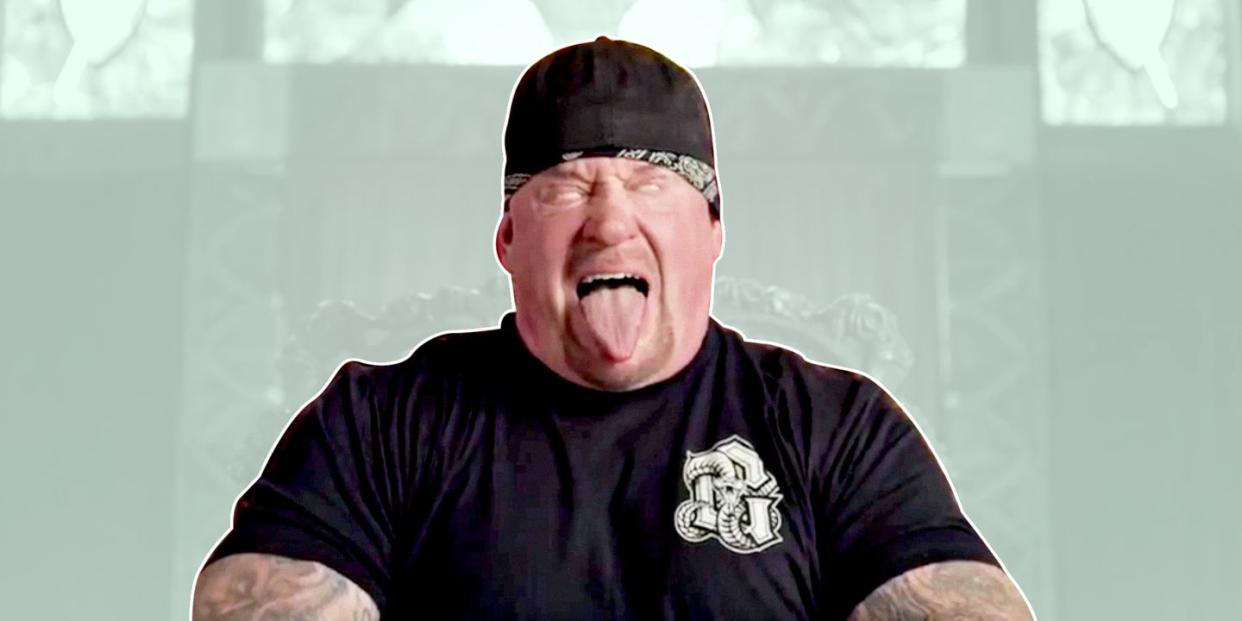Is Anything Real in Wrestling? 'WWE Evil' Grappes With a Fuzzy Truth

- Oops!Something went wrong.Please try again later.
- Oops!Something went wrong.Please try again later.
"Hearst Magazines and Yahoo may earn commission or revenue on some items through the links below."
The cardinal rule of professional wrestling is to keep up appearances. The greats like Triple H, CM Punk, and Ric Flair always embodied their personas—always put the character before reality. Hell, The Undertaker didn't break character until well after his retirement. That changes today with the arrival of a bold creative decision by the WWE. The company has lifted the veil themselves. In the first original series since signing a hefty contract with streamer Peacock, WWE has released the docuseries WWE Evil, which follows nine legendary wrestling villains—new and old—throughout their careers.
The eight-episode series dropped in its entirety on March 24, revealing the origin stories of wrestlers like The Miz, Hollywood Hulk Hogan, the Brothers of Destruction, and more. And while many of the talking heads are people you'd expect—the talent and their overseeing boardroom executives—the series also pulls in famous fans and journalists to round out the discussion about these menacing figures.
Produced in part by John Cena as well as the WWE, WWE Evil is heavy on drama but light on the nitty gritty of the wrestling company, always staying well shy of anything that even verges on critical of the brand's storied missteps. Instead, the series operates more like a semi-scripted scrapbook, resurrecting iconic moments that have defined each character, and in turn, the sport itself. The information made available isn't groundbreaking—most of it is accessible if you care to track it down in different corners of the Internet. But for the first time, it's packaged in one place with the men who brought these roles to life opening up about creating their famous characters.
What makes WWE Evil so compelling—for wrestling fans and casual viewers alike—is that the series doesn't hesitate to discuss what is often a taboo subject in the world of Smackdown: the writer's room. They don't blow the whole gig, but WWE Evil dives just deep enough to give a glimpse into the development process, and it a testament to the creativity of the industry. Episode Four, which chronicles the rise of the Brothers of Destruction (The Undertaker and Kane) is as much wrestling entertainment as it is backstory.
But that's what WWE does best. In the sixth episode, the series focuses on Stephanie McMahon—the WWE's Chief Brand Officer and the real life daughter of WWE CEO Vince McMahon. Those aren't characters, the uninitiated might be thinking reading this, but how wrong they are. This is one of the few entertainment franchises that has turned its C-suite into actual roles. The line where the Business McMahons end and the Character McMahons begin has always been blurry. While WWE Evil gives an idea of how she came to be a legitimate villain in the WWE, it also does a masterful job of keeping McMahon at a distance. (After all, at least a handful of the subjects being discussed are still active figures in the WWE. You can have a wink and a smirk, but nothing more.)
For wrestling newbies, WWE Evil is a crash course into the meanest, baddest, biggest characters in the sporting world. For lifelong fans, it's a love letter that honors the unspoken bond that the WWE and its base has: to reveal enough to pique interest without ruining the façade. Could the series be more in depth? Sure. But stopping before too much is given away is the tightrope that the McMahon family has always walked. Anything more revealing just wouldn't be fun.
You Might Also Like

